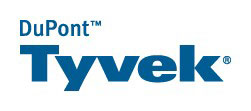 |
| Photo credit: Adam Lobelson |
A puppet theater production with everything made from Tyvek? For two weekends in September 2015, that's exactly what happened at the University of Connecticut, where Margarita Blush and the Ballard Institute and Museum of Puppetry presented
Unfolding, an original puppet theater production.
According to Professor Blush,
Unfolding is an original puppet theatre production that examines the themes of women's wisdom and empowerment. The show features hand-crafted puppets, live acting, unique scenography, and composed music.
The visual inspiration for the show comes from paper art: pop-up books, origami, paper sculpture, paper installations, and many more.
The idea was to create the puppets, scenography and costumes primarily out of paper (or paper-like materials). Through our research, my designer (Dimitar Dimitrov) and I discovered Tyvek. Tyvek has recently gained a lot of popularity in the world of puppet theatre. Yet, Unfolding uses Tyvek in a way that has not been done to this point – the entire production is made with and out of Tyvek! Tyvek provided us with so many amazing qualities – it is very durable, it creates and holds very interesting shapes, it has a beautiful “glow” under theatre lighting, it can be painted, its fiber texture is gorgeous when lit from behind in shadow sequences, different kinds of Tyvek can be used for different things – set, costumes, puppets, it is very light. An added benefit was the Fire Marshall’s approval of the fire resistant qualities of the material!
Overall – it was an amazing material to work with and we are very proud and inspired by our original and unique use of Tyvek!
Professor Blush and UConn purchased the
Tyvek materials from Material Concepts, and the Tyvek styles used were 1443R, 1622E, 10GX.
Thank you to Professor Blush for providing the background and insights on the production and the uses of Tyvek; her comments are used with permission. Photos from Adam Lobelson and Robert Blush were also provided and used with permissions; photo credits provided.
Thinking of making puppets or doing a theater production and want to use Tyvek? Material Concepts' product specialists are available during business hours to assist with the selection of Tyvek styles for any use. For more information via phone call 215-338-6515 or 1-800-372-3366, or
buy Tyvek online.
 |
| Photo credit: Adam Lobelson |
 |
| Photo credit: Adam Lobelson |
 |
| Photo credit: Adam Lobelson |
 |
| Photo credit:Robert Blush |
 |
| Photo credit:Robert Blush |
 |
| Photo credit:Robert Blush |
 |
| Photo credit: Adam Lobelson |






















































